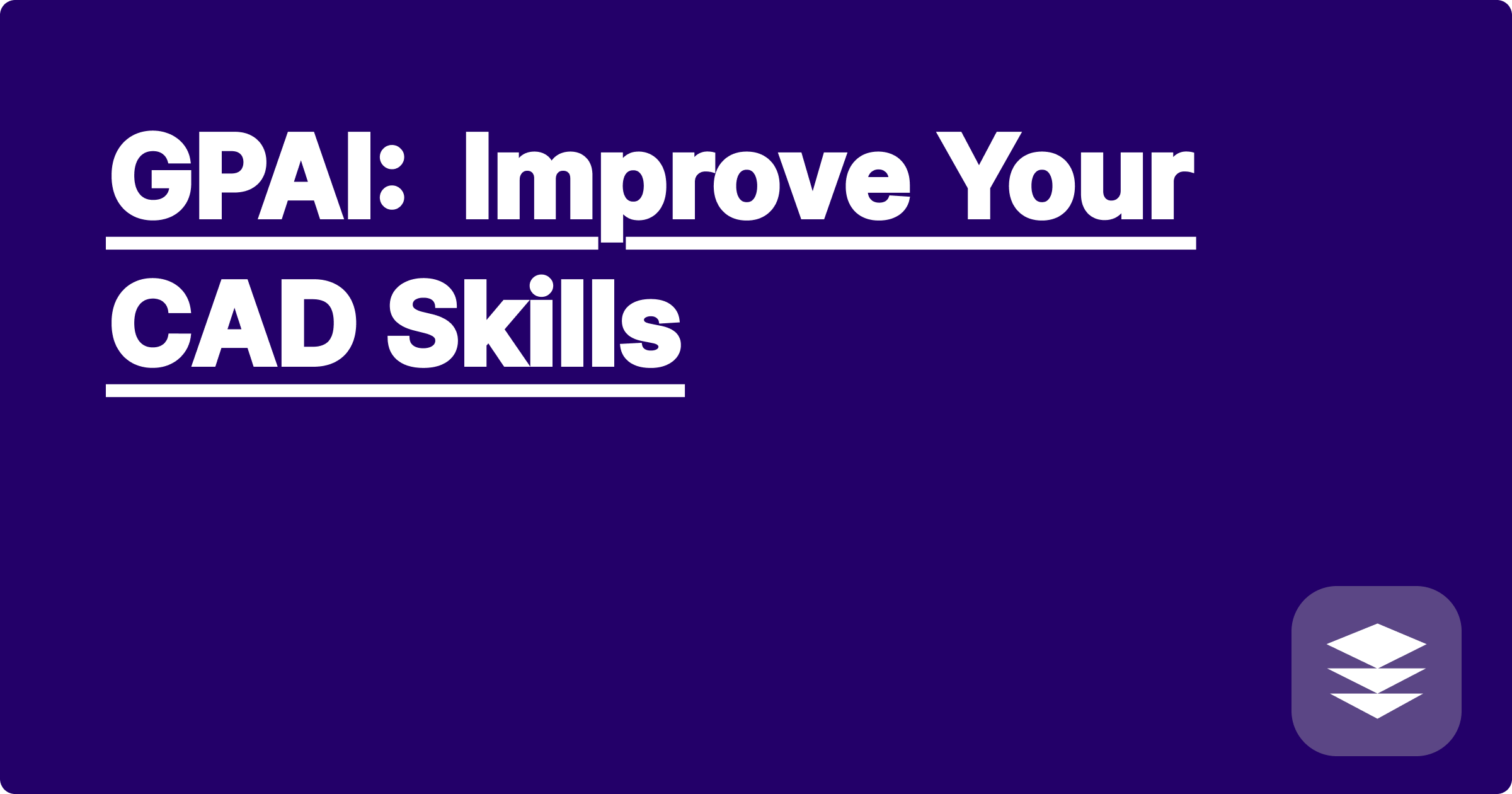
The world of STEM is a thrilling, yet demanding landscape. It pushes you to grapple with complex concepts, solve intricate problems, and constantly learn new skills. One such skill, crucial for many STEM disciplines, is Computer-Aided Design (CAD). Mastering CAD can feel like climbing a steep mountain, especially when juggling other coursework, research, and extracurriculars. However, what if you had a sherpa, a guide to help you navigate this challenging terrain? Enter the power of Artificial Intelligence (AI). AI isn’t just a futuristic buzzword; it's a powerful tool that can revolutionize your learning journey and significantly boost your CAD skills. This blog post explores how you can leverage AI platforms and tools to conquer the CAD learning curve and gain a significant edge in your STEM studies.
For STEM students and researchers, CAD proficiency is often the key to unlocking innovative design solutions and pushing the boundaries of their fields. Whether you’re designing a bridge, a microchip, or a new medical device, CAD skills are essential for visualizing, analyzing, and refining your ideas. However, traditional CAD learning methods can be time-consuming, often involving steep learning curves and repetitive practice. This is where AI steps in, offering personalized learning experiences, automated assistance, and intelligent feedback that can accelerate your CAD mastery. By integrating AI into your workflow, you can transform your learning experience from a tedious climb into an exciting and efficient journey.
Learning CAD software often involves navigating complex interfaces, memorizing numerous commands, and understanding intricate design principles. Traditional learning methods, such as textbooks and online tutorials, can be generic and fail to address individual learning styles and paces. Students often struggle with specific features or concepts, leading to frustration and a sense of being overwhelmed. Furthermore, practicing CAD effectively requires access to resources, feedback, and guidance, which can be limited in traditional learning environments. This can hinder progress and discourage students from fully exploring the potential of CAD. The lack of personalized learning experiences and the sheer volume of information can make mastering CAD a daunting task.
Imagine having a personalized CAD tutor available 24/7. This is the promise of AI-powered learning platforms like the hypothetical GPAI (Generative Personalized AI for learning). GPAI and similar tools leverage AI to analyze your learning style, identify your strengths and weaknesses, and create a customized learning path tailored to your specific needs. GPAI can break down complex CAD concepts into digestible modules, provide interactive exercises, and offer real-time feedback on your designs. Moreover, AI tools like ChatGPT, Claude, and Wolfram Alpha can be invaluable resources for troubleshooting CAD issues, finding design inspiration, and automating repetitive tasks. For instance, you can use ChatGPT to generate code snippets for specific CAD operations or ask Wolfram Alpha to perform complex calculations related to your design.
Integrating AI into your CAD learning workflow is surprisingly straightforward. First, identify your specific learning goals and the CAD software you want to master. Then, explore AI-powered learning platforms like GPAI (or its real-world equivalents) and choose one that aligns with your needs and learning style. Start by working through the platform’s introductory modules and assessments to allow the AI to personalize your learning path. As you progress, actively engage with the interactive exercises and seek feedback from the platform’s AI tutor. Simultaneously, utilize tools like ChatGPT and Wolfram Alpha to supplement your learning. For example, if you’re struggling with a particular CAD command, ask ChatGPT to explain it in simpler terms or provide examples of its usage. Continuously evaluate your progress and adjust your learning strategy as needed, leveraging the insights provided by the AI platform.
Consider a scenario where you’re designing a complex gear system in SolidWorks. You’re struggling to understand the relationship between gear ratios and the resulting torque. You can use Wolfram Alpha to quickly calculate the torque based on different gear ratios, allowing you to experiment with various design parameters and visualize the impact on performance. Alternatively, imagine you're designing a circuit board in Eagle and need to generate specific component footprints. You could use ChatGPT to generate the necessary code, saving you valuable time and effort. In another instance, you're working on a 3D model in Fusion 360 and encounter an error message you don't understand. A quick query to ChatGPT can provide insights into the error and potential solutions. These are just a few examples of how AI can seamlessly integrate into your CAD workflow, enhancing your understanding and accelerating your design process.
To maximize the benefits of AI in your CAD learning journey, embrace a proactive and strategic approach. Establish clear learning goals and break them down into smaller, manageable milestones. Actively engage with AI-powered learning platforms and utilize their personalized feedback to identify areas for improvement. Don't be afraid to experiment with different AI tools and find the ones that best suit your learning style. Integrate AI into your daily study routine, using it to clarify concepts, automate tasks, and enhance your understanding. Furthermore, connect with online communities and forums to share your experiences, learn from others, and stay updated on the latest AI advancements in CAD.
Embrace the power of AI as your learning companion in the exciting world of CAD. By integrating these intelligent tools into your workflow, you can transform your learning experience, accelerate your skill development, and unlock your full potential as a STEM innovator. Start exploring the available AI resources today and embark on a more efficient and rewarding CAD learning journey. The future of design is here, and AI is your key to unlocking its potential.